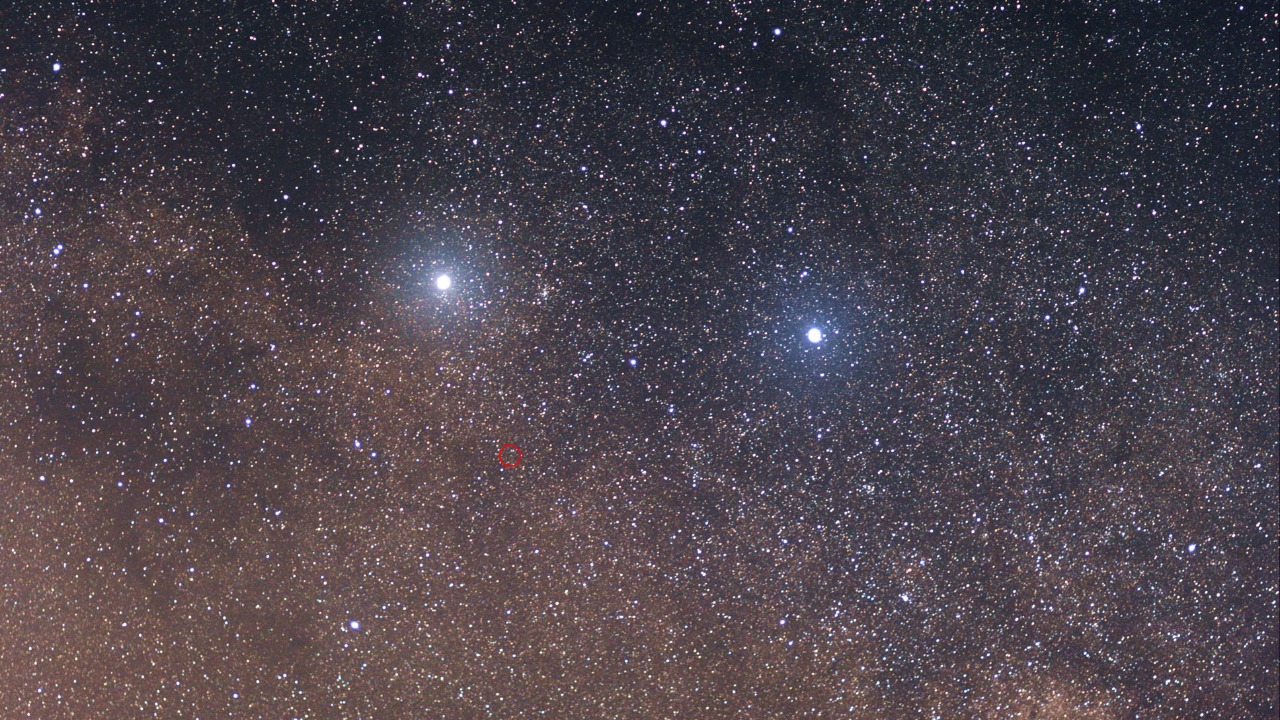
Scientists have recently detected a mysterious radio signal from Proxima Centauri, the closest star system to Earth, sparking global interest and speculation. This discovery, known as the “pulse,” is being scrutinized as part of the ongoing search for extraterrestrial life. Researchers are now working to determine whether this signal is a natural phenomenon or a potential sign of intelligent life.
The Discovery of the Strange Pulse

The strange pulse from Proxima Centauri was first detected during routine observations by astronomers using radio telescopes. These telescopes are equipped with advanced technology capable of capturing faint radio waves from distant star systems. The initial detection was made possible by the use of a highly sensitive receiver that can differentiate between various frequencies, allowing scientists to identify unusual patterns in the data. The pulse itself manifested as a narrowband signal, something that naturally occurring cosmic phenomena rarely produce, thus capturing the immediate attention of the scientific community.
Proxima Centauri has always been an intriguing target for astronomers due to its proximity to Earth and the presence of an Earth-sized exoplanet within its habitable zone. This star system has been the focus of numerous studies, primarily because of its potential to host life. Previous observations have revealed flares and other activities on Proxima Centauri, contributing to its reputation as a dynamic and fascinating celestial object. The history of observations in this star system has laid the groundwork for detailed analysis of any new phenomena, such as this latest pulse.
The discovery of the pulse was met with both excitement and skepticism. While some researchers were thrilled by the possibility of uncovering a signal from an intelligent extraterrestrial source, others were cautious, acknowledging the many instances of false alarms in the past. The immediate steps taken involved cross-verifying data and ruling out any terrestrial interference, a common challenge in radio astronomy. It was crucial to determine whether the pulse was truly originating from Proxima Centauri or if it was an artifact of human technology.
Investigating the Origin of the Signal

Several natural explanations have been proposed to account for the strange pulse from Proxima Centauri. One possibility is that the signal could be the result of a stellar flare or some other astrophysical phenomenon. Proxima Centauri is known for its frequent and intense stellar flares, which can produce radio emissions. However, these typically manifest as broadband signals, unlike the narrowband characteristic of the pulse.
The role of the Breakthrough Listen initiative is pivotal in analyzing the signal. As a project dedicated to searching for signs of intelligent life, Breakthrough Listen employs sophisticated algorithms and methodologies to differentiate between natural and artificial signals. Their involvement has brought a critical lens to the analysis, with experts meticulously examining the data for any indication of patterns consistent with technology as opposed to nature.=
Distinguishing between artificial and natural signals poses significant challenges. One major hurdle is ruling out terrestrial interference, as Earth-based technologies can inadvertently mimic extraterrestrial signals. Moreover, identifying unique characteristics that might suggest an alien origin requires a comprehensive understanding of both cosmic and man-made radio waves. This complexity underscores the importance of a thorough and methodical approach to the investigation.
Implications for the Search for Extraterrestrial Life

The current discovery brings to mind historical instances of unexplained signals, such as the famous Wow! signal detected in 1977. Like the Wow! signal, the Proxima Centauri pulse presents a tantalizing possibility of communication from an extraterrestrial civilization. However, the lack of repetition in both cases highlights the difficulty of drawing definitive conclusions from single occurrences.
The potential discovery of an extraterrestrial signal could significantly impact future research in the field of SETI (Search for Extraterrestrial Intelligence). A confirmed signal would likely lead to increased funding, advancements in technology, and a shift in strategic priorities. More sophisticated detection equipment and targeted observational campaigns could become the focus, as scientists strive to either replicate the signal or find new ones.
Beyond the scientific community, the implications of discovering intelligent life are profound. Such a revelation could challenge our understanding of humanity’s place in the universe, raising ethical and philosophical questions. It might also influence cultural and societal perspectives, as people grapple with the reality of no longer being alone in the cosmos.
The Next Steps in Research and Exploration

Ongoing analysis of the Proxima Centauri pulse involves a collaborative effort from scientists around the world. This international cooperation is essential for pooling resources and expertise, allowing for a more comprehensive investigation. Multidisciplinary approaches, incorporating fields such as astrophysics, signal processing, and even philosophy, are being employed to ensure that all aspects of the signal are thoroughly examined.
Looking ahead, scheduled observational campaigns aim to probe Proxima Centauri more deeply. Upcoming missions with advanced telescopes and instruments are expected to provide further insights into the nature of the pulse. These efforts will help scientists confirm or refute the presence of extraterrestrial technology, contributing valuable data to the broader search for life beyond Earth.
Public and scientific engagement is crucial in maintaining interest and support for ongoing research. Transparent communication about findings, whether they confirm or debunk the alien hypothesis, helps foster trust and enthusiasm among the public. This engagement not only supports funding and resource allocation but also inspires future generations of scientists and explorers.
The detection of the strange pulse from Proxima Centauri has opened a new chapter in the search for extraterrestrial life. While the exact nature and origin of the signal remain uncertain, the quest to understand it continues to captivate scientists and the public alike. As research progresses, the possibility of uncovering evidence of intelligent life beyond Earth remains an exciting and profound prospect.